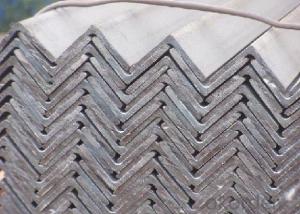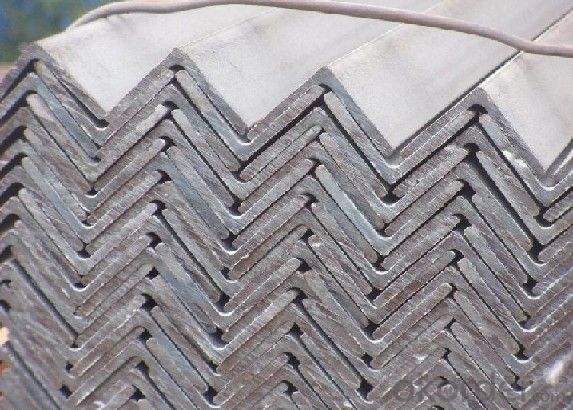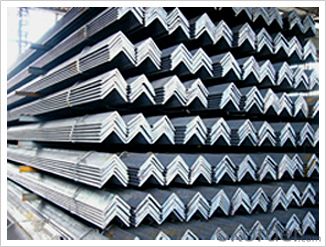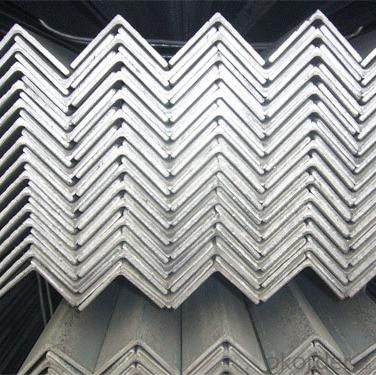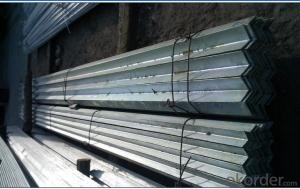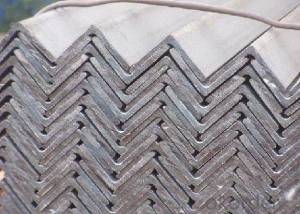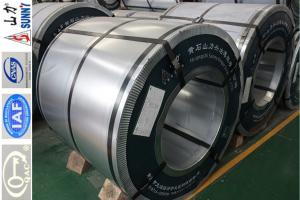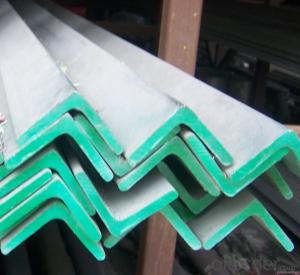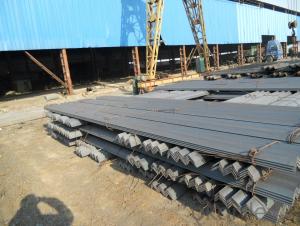Small angle, angle steel, galvanized angle steel
- Loading Port:
- Tianjin
- Payment Terms:
- TT OR LC
- Min Order Qty:
- 50 m.t.
- Supply Capability:
- 2000 m.t./month
OKorder Service Pledge
OKorder Financial Service
You Might Also Like
Angle called angle, the steel strip is perpendicular to each other on both sides into angular.Divided into equilateral angle steel and ranging from side angle. Two equilateral angle steel edge width is the same. The specification is expressed by edge width * width * thick edgenumber of millimeters. Such as "/ 30 x 30 x 3", namely that equilateral angle steel edge widthof 30 mm, 3 mm thick edge. Can also be used to model representation, model is the wideangle 3# cm, such as. The model does not represent the same type in different edge thickness size, thus in the contract and other documents on the angle of the edge width, edgethick size fill in complete, avoid alone represented by type. Hot rolled equilateral angle steelspecifications for 2#-20#. Angle according to the different needs of structure composed of a variety of stress components, can also be used as a component of the connections between the. Widely used in a variety of architectural and engineering structures, such as beams,bridges, towers, hoisting and conveying machinery, ships, industrial furnace, reactor,container frame and warehouse.
Mainly divided into equilateral angle steel, equilateral angle steel two categories, includingunequal angle can be divided into equal thickness and unequal thickness ranging from two.
Angle specifications with the side length of the size and edge thickness. At present, the domestic steel specifications for 2 - 20 cm in length, number of numbers, the same horn steel often have 2 - 7 different edge thickness. The actual size and inlet angle marked on both sides of the thickness and indicate the relevant standards. The general length of more than 12.5cm for large angle steel, 12.5cm - 5cm for the medium angle, length of 5cm for smallangle.
Inlet and outlet angle steel orders generally required the use specifications in the steel,carbon structural steel grades as appropriate. Is the angle in addition to standard number, nospecific composition and performance series.
Angle steel delivery length is divided into fixed length, size two, domestic steel length range is3 - 9m, 4 12M, 4 19m, 6 19m four range according to different specifications. Japanese steellength ranges from 6 to 15m.
Section of unequal angle height according to the long edge of the width to calculate the non equilateral angle steel. Refer to section angle and side length is not equal to the steel. Is a kind of angle steel. The length from 25mm * 16mm to 200mm * l25mm. By the hot rolling mill rolling in. General scalene angle steel specifications: thickness of 4-18mm / 50*32-- / 200*125
Equilateral angle steel is widely used in all kinds of metal structures, bridges, machinery manufacturing and shipbuilding industry, all kinds of architectural and engineering structures,such as beams, bridges, towers, hoisting and conveying machinery, ships, industrial furnace,reactor, container frame and warehouse etc.
- Q: What's the size of the 50 angle iron?
- Angle called angle, the steel strip is perpendicular to each other on both sides into the corner. There are equal angles and unequal angles. The two sides of an equal angle steel are equal in width.The specifications are expressed in millimeters of edge width * edge width * edge thickness. Such as "/ 30 x 30 x 3", that is 30 mm equilateral angle edge width edge thickness was 3 mm. Also available models that model is the number of centimeters wide, such as angle 3#. The model does not mean the size of the different edges and sizes of the same model. Therefore, the width, the edge and the thickness of the angle iron should be filled out in the contract and other documents, so as not to be indicated by the model alone. Standard Specification for hot-rolled equal angle iron is 2#-20#.
- Q: Can steel angles be used in pedestrian bridges?
- Yes, steel angles can be used in the construction of pedestrian bridges. Steel angles are commonly used in bridge construction due to their high strength-to-weight ratio and versatility. They are often used as structural members to provide support, stability, and rigidity to the bridge structure. Steel angles are capable of withstanding heavy loads and forces, making them suitable for pedestrian bridges that need to support the weight of individuals walking across. Additionally, steel angles can be easily fabricated and welded, allowing for flexibility in the design and construction of pedestrian bridges. Overall, steel angles are a popular choice for constructing pedestrian bridges due to their durability, strength, and ease of use.
- Q: How do steel angles perform in terms of water resistance or waterproofing?
- Steel angles typically lack inherent water resistance or waterproofing properties, as they are composed of metal and thus prone to corrosion and rust when exposed to water or moisture over extended periods. Nevertheless, there are various means by which the water resistance or waterproofing of steel angles may be enhanced. One prevalent approach involves the application of a protective coating, such as galvanization or painting, onto the steel angles. Galvanization entails the application of a zinc layer to the steel, which serves as a barrier against water and inhibits corrosion. Conversely, painting creates a protective layer that seals out moisture and prevents direct contact between the steel and water. Moreover, the water resistance of steel angles can be bolstered through appropriate design and installation techniques. For instance, ensuring adequate drainage and averting water accumulation on or around the steel angles can prevent prolonged exposure to moisture, thereby diminishing the risk of corrosion. It is crucial to acknowledge that despite the aforementioned measures, steel angles may still be susceptible to water damage if the protective coatings are compromised or if constant exposure to harsh environmental conditions persists. Consequently, routine inspection, maintenance, and timely repair or reapplication of protective coatings are indispensable for ensuring enduring water resistance.
- Q: How do you design bracing using steel angles?
- Designing bracing using steel angles involves determining the required strength and stiffness of the bracing members, selecting appropriate steel angles based on their load-bearing capacities, and arranging them in a configuration that effectively resists the applied forces and moments. The design process typically includes analyzing the structure's loadings, determining the required bracing forces, calculating the required cross-sectional area of the steel angles, and verifying the design against relevant design codes and standards. Additionally, considerations such as connection details and fabrication constraints also play a role in designing bracing using steel angles.
- Q: Can steel angles be painted?
- Yes, steel angles can be painted. The process of painting steel angles involves cleaning the surface, applying a primer, and then applying the desired paint. The primer helps to create a smooth and even surface for the paint to adhere to, while also providing additional protection against corrosion. Once the primer is dry, the paint can be applied using a brush, roller, or spray gun. It is important to choose a paint that is specifically designed for metal surfaces to ensure proper adhesion and durability. Overall, painting steel angles is a common practice to enhance their appearance and provide additional protection against rust and corrosion.
- Q: What are the different methods for protecting steel angles from corrosion?
- There are multiple ways to safeguard steel angles from corrosion. Firstly, galvanization is a commonly employed technique. It involves applying a layer of zinc to the steel angle's surface. This zinc layer acts as a sacrificial anode, corroding before the steel and safeguarding it from rust. Galvanization is particularly effective in outdoor applications like construction and infrastructure projects. Another method is using paint coatings. By coating the steel angle with paint, a protective layer is formed, preventing moisture and oxygen from reaching the surface and hindering corrosion. For long-term protection, it is crucial to use high-quality, corrosion-resistant paints. Powder coating is also an option. It entails applying a dry powder to the steel angle which is then cured at high temperatures. This creates a robust and durable layer on the surface, offering exceptional resistance to corrosion. Powder coating is suitable for both indoor and outdoor applications and provides an appealing finish. Furthermore, stainless steel angles can be utilized to guard against corrosion. Stainless steel contains chromium, which forms a passive oxide layer on the surface, acting as a protective barrier. This makes stainless steel highly resistant to rust, making it a preferred choice when corrosion is a concern. Lastly, cathodic protection is a technique that involves making the steel angle the cathode in a corrosion cell. This can be achieved by connecting the steel angle to a sacrificial anode, such as zinc or aluminum, or by employing impressed current systems. By doing so, the anode corrodes instead of the steel, effectively protecting it from corrosion. It is important to consider various factors, including the intended application, environmental conditions, and budget constraints when selecting the appropriate method for protecting steel angles from corrosion. Consulting corrosion experts and considering project-specific requirements is advisable to ensure the most suitable method is chosen.
- Q: Can steel angles be used as structural supports?
- Yes, steel angles can be used as structural supports. Steel angles are commonly used in construction and engineering projects as they offer excellent strength and stability. They have a unique L-shape design that makes them ideal for providing support and structural integrity to various structures. Steel angles are often used as beams, braces, or supports in buildings, bridges, and other infrastructure projects. They are capable of handling heavy loads and are resistant to bending and compression forces, making them a reliable choice for structural support. Additionally, steel angles can be easily fabricated and installed, making them a cost-effective solution for construction purposes.
- Q: Are steel angles suitable for earthquake-prone areas?
- Steel angles are commonly used in construction, particularly in earthquake-prone areas, due to their excellent structural properties. The L-shaped design of steel angles provides significant stability and strength, making them suitable for withstanding seismic forces. Steel angles are known for their high tensile strength and ability to resist bending and twisting, which is crucial during an earthquake. Additionally, steel is a ductile material, meaning it can undergo significant deformation without undergoing failure, thus absorbing some of the energy generated by seismic activity. This flexibility helps to prevent catastrophic structural collapse during an earthquake. Furthermore, steel angles can be easily bolted or welded together, allowing for efficient and cost-effective construction. However, it is important to note that the design and construction of structures in earthquake-prone areas should be done in accordance with local building codes and regulations to ensure maximum safety.
- Q: Can steel angles be used for storage rack systems?
- Yes, steel angles can be used for storage rack systems. Steel angles provide structural support and stability, making them a suitable choice for constructing storage racks that can hold heavy loads and withstand frequent use. The versatility and strength of steel angles make them a popular choice in various industrial and commercial storage applications.
- Q: What are the different types of steel angles used in HVAC systems?
- HVAC systems commonly utilize several types of steel angles to ensure structural support and stability. These angles play a crucial role in maintaining the system's functionality. The most frequently employed steel angle in HVAC systems is the L-shaped angle. With its 90-degree angle, it is utilized to frame and support various components, including ductwork, vents, and equipment stands. Another angle commonly found in HVAC systems is the U-shaped angle, also known as a channel. It is used to create tracks or channels that securely hold and support pipes, conduits, and wiring. This angle ensures an organized and secure route for these components throughout the system. The Z-shaped angle is specifically designed for creating brackets and supports in HVAC systems. Its unique shape provides enhanced strength and stability, making it ideal for holding heavy equipment or reinforcing ductwork and other components. The T-shaped angle is another frequently used steel angle. It serves the purpose of joining and connecting different sections of ductwork or other components. Its design allows for easy assembly and disassembly, providing convenience for maintenance and repairs. Additionally, slotted angles are versatile and adjustable steel angles commonly used in HVAC systems. They feature a series of holes or slots along their length, facilitating the attachment of various components. This type of angle is often utilized to create custom supports or racks for HVAC equipment or to mount accessories like fans or filters. Overall, the diverse range of steel angles employed in HVAC systems ensures the necessary strength, support, and versatility required for proper installation and operation of the system.
Send your message to us
Small angle, angle steel, galvanized angle steel
- Loading Port:
- Tianjin
- Payment Terms:
- TT OR LC
- Min Order Qty:
- 50 m.t.
- Supply Capability:
- 2000 m.t./month
OKorder Service Pledge
OKorder Financial Service
Similar products
Hot products
Hot Searches
Related keywords
